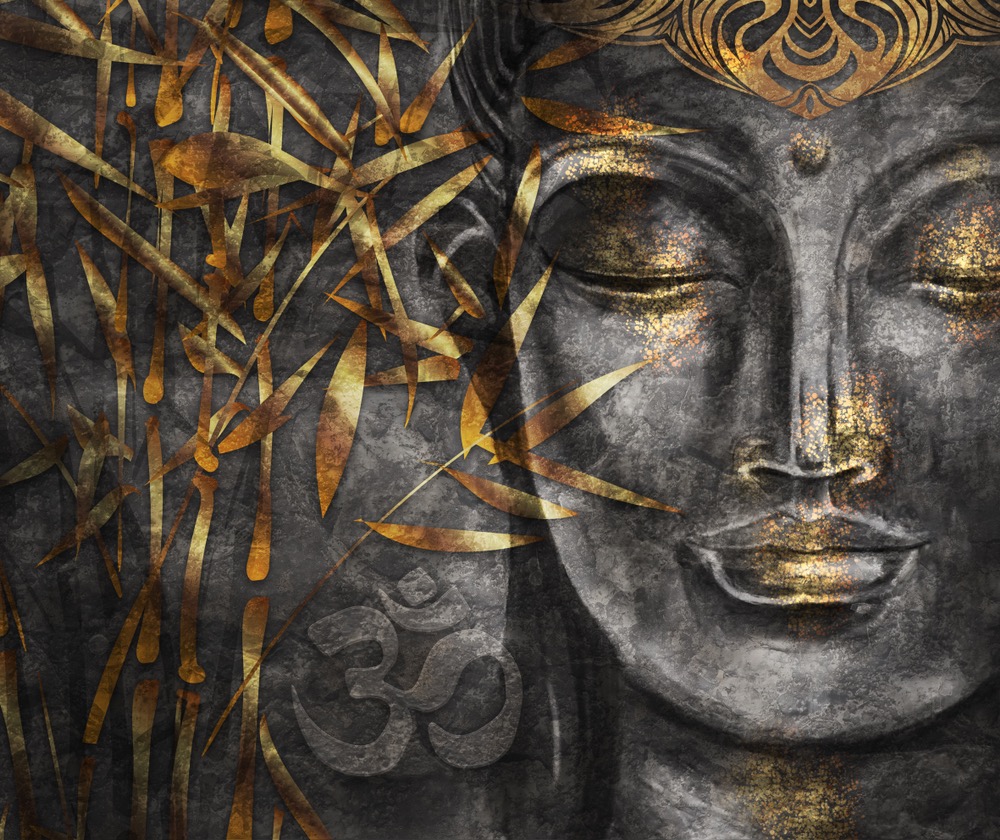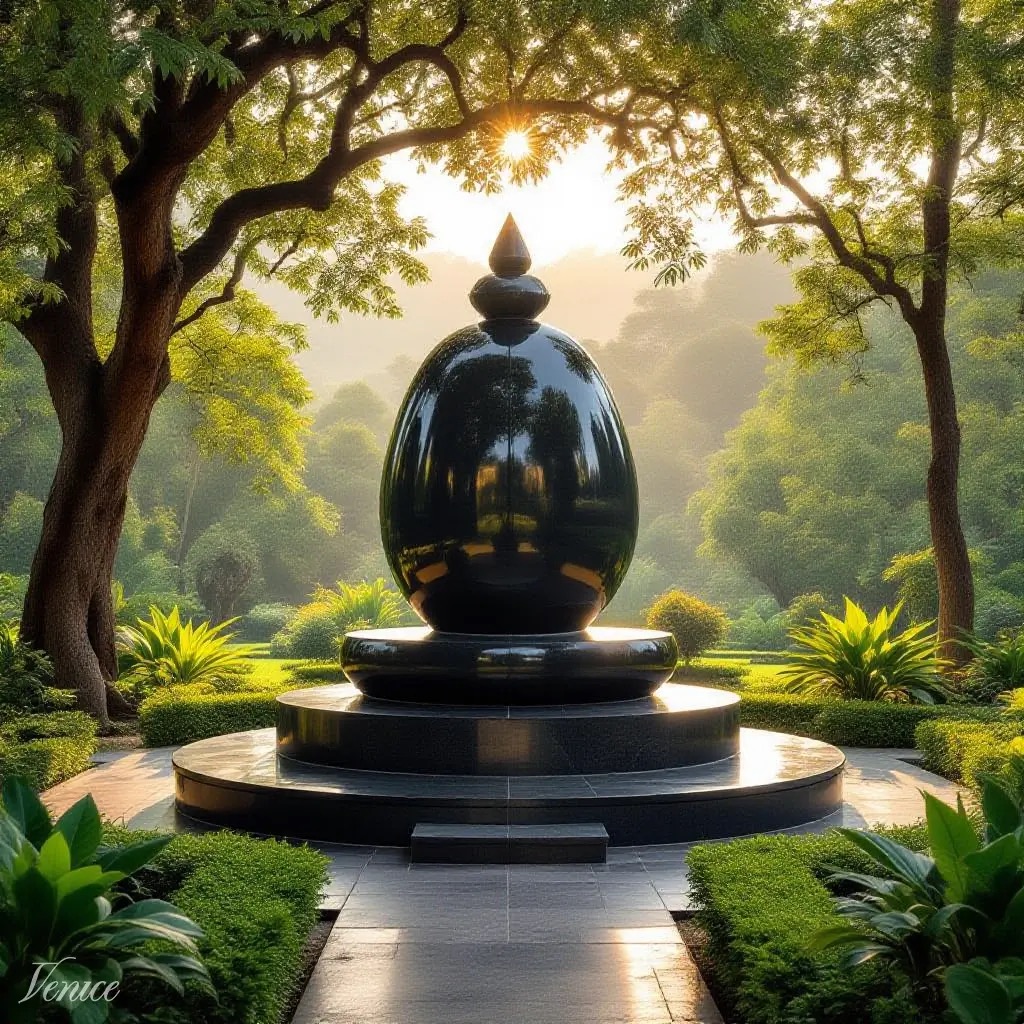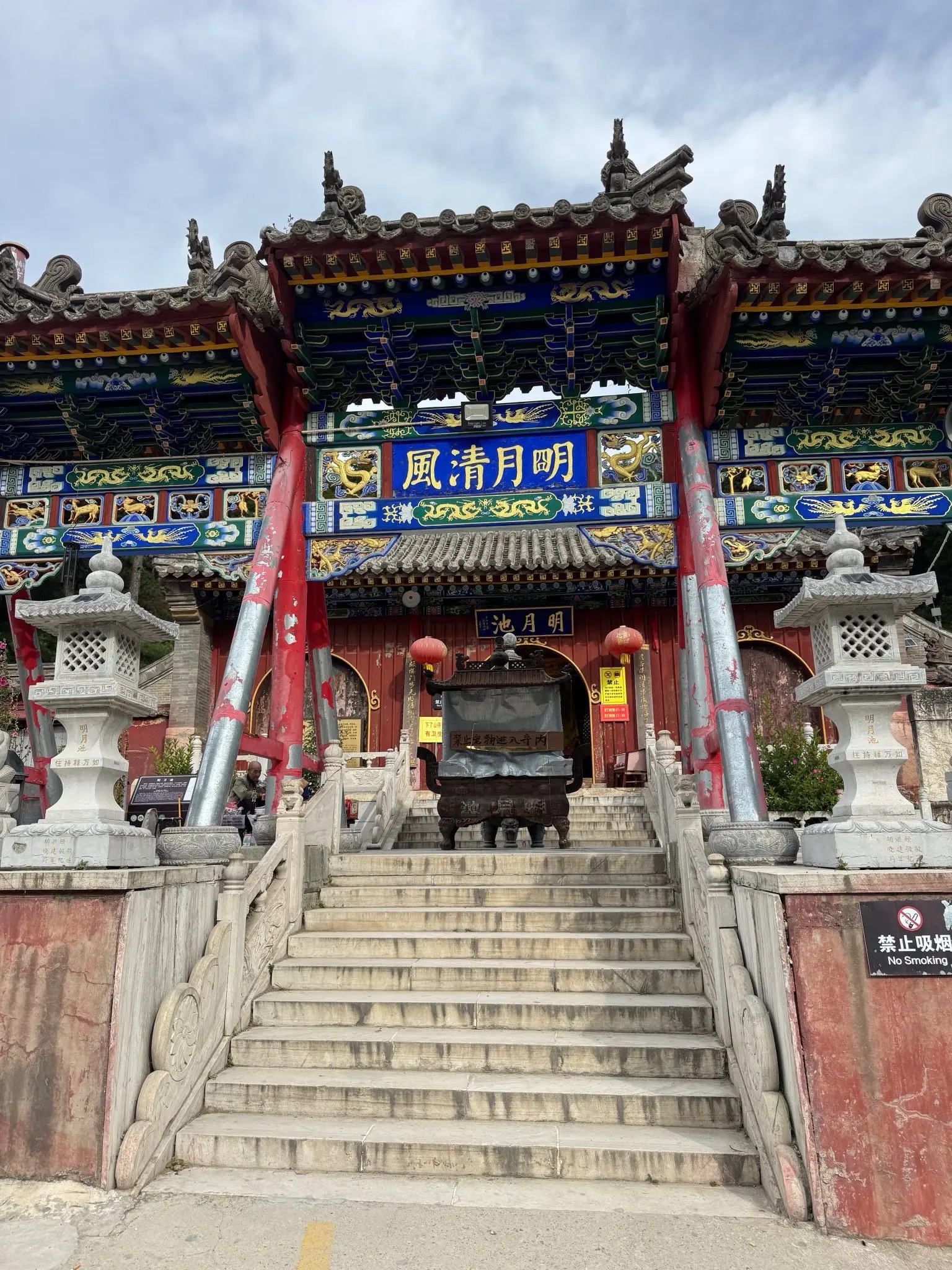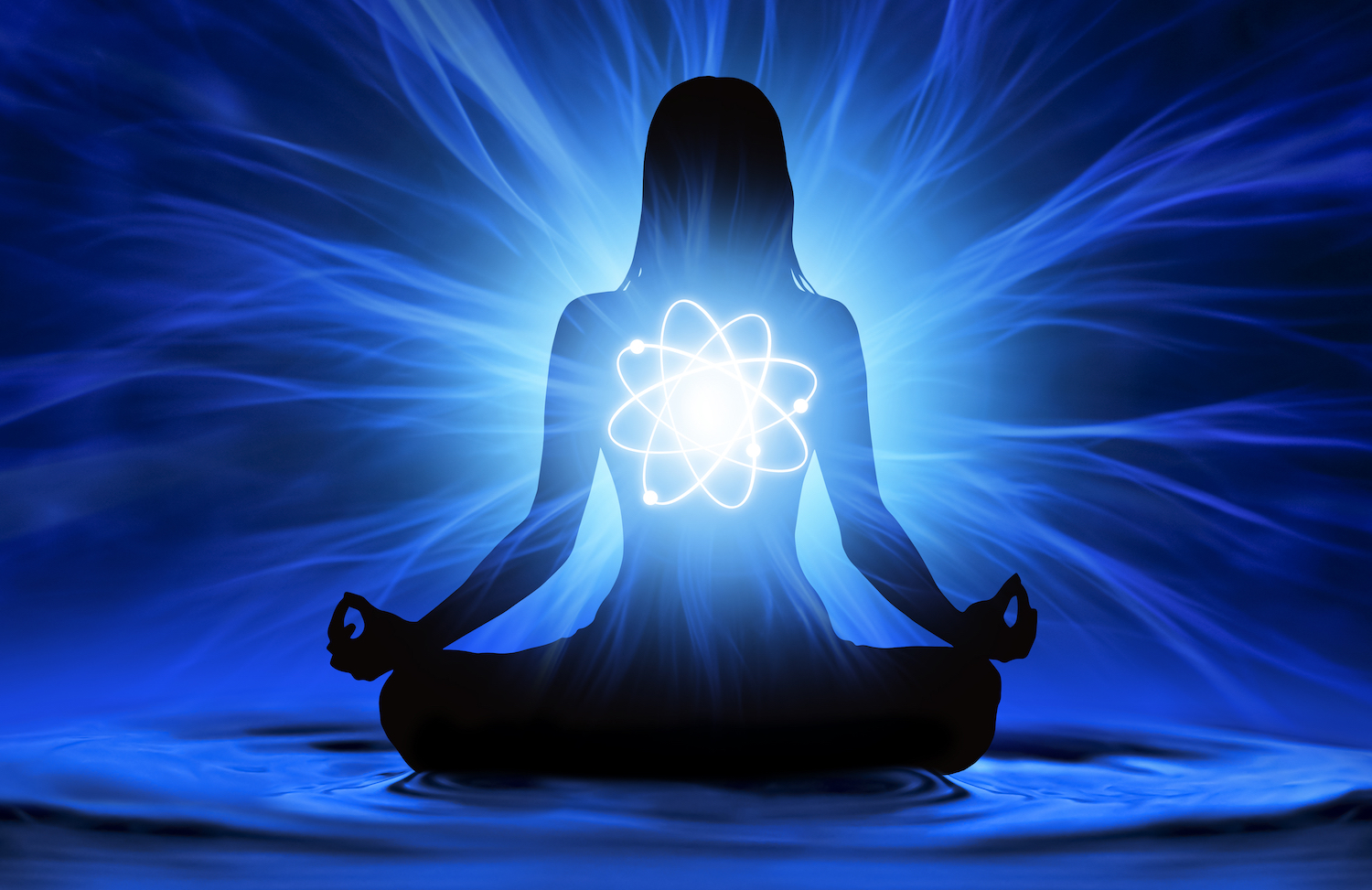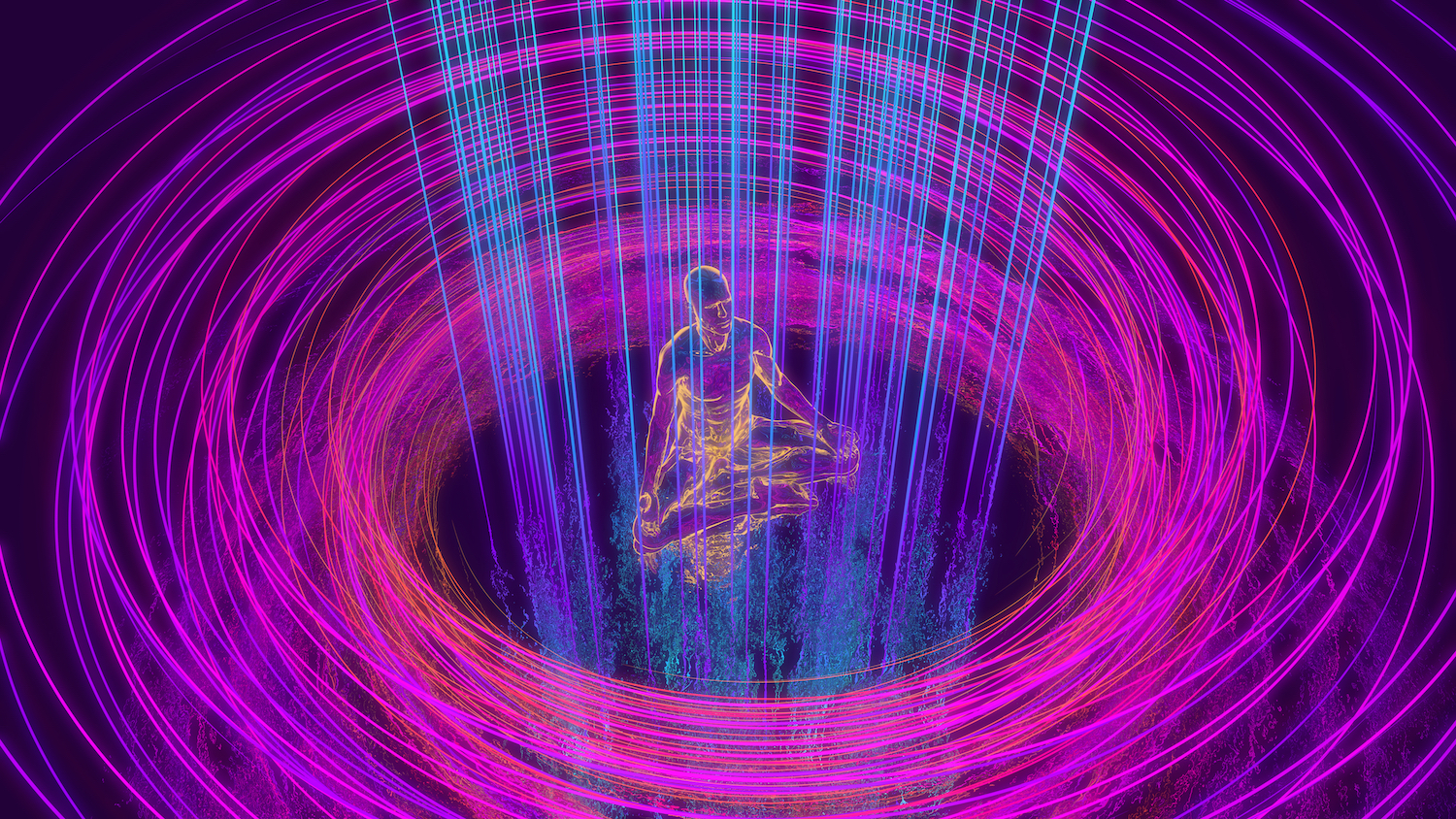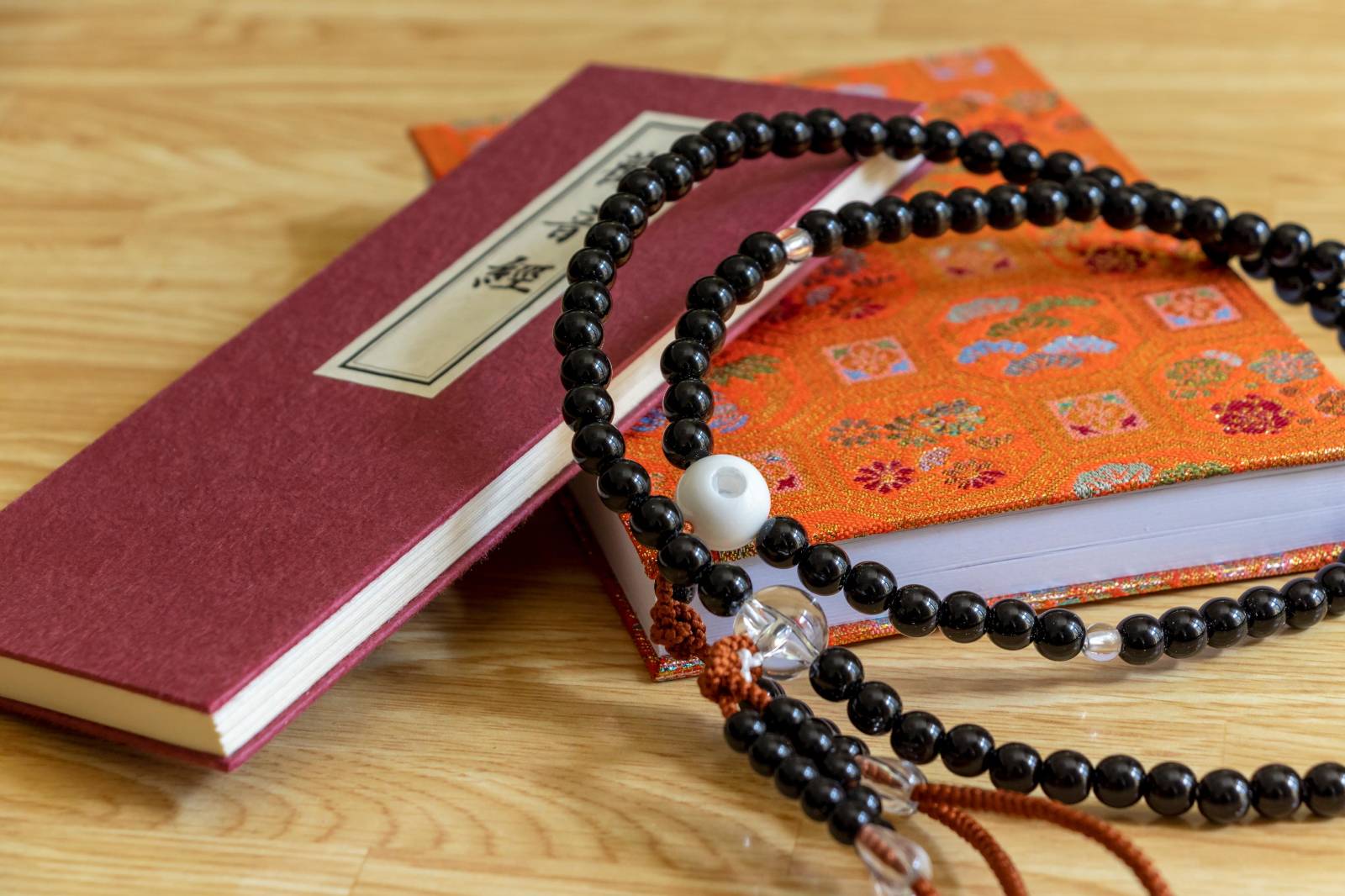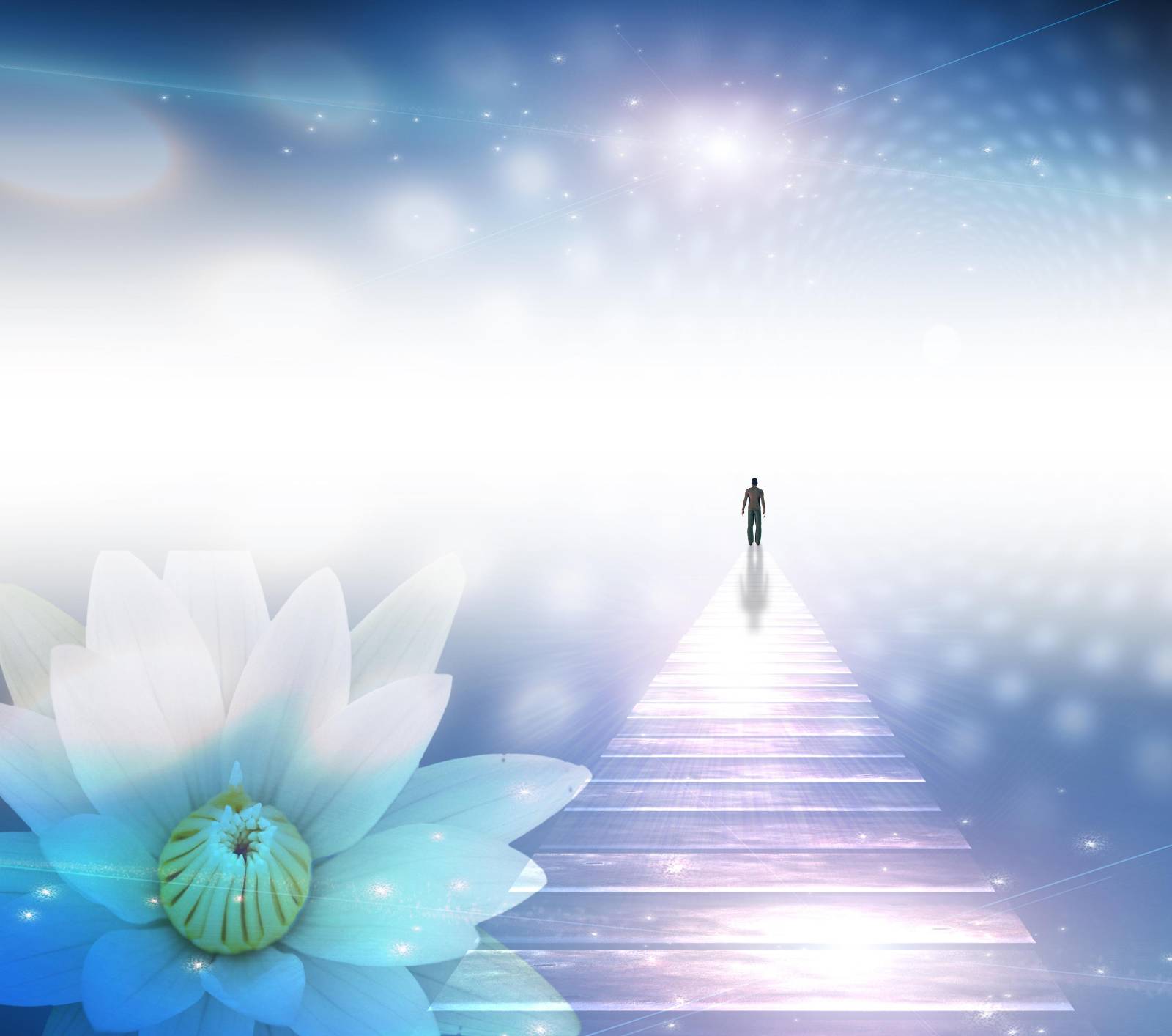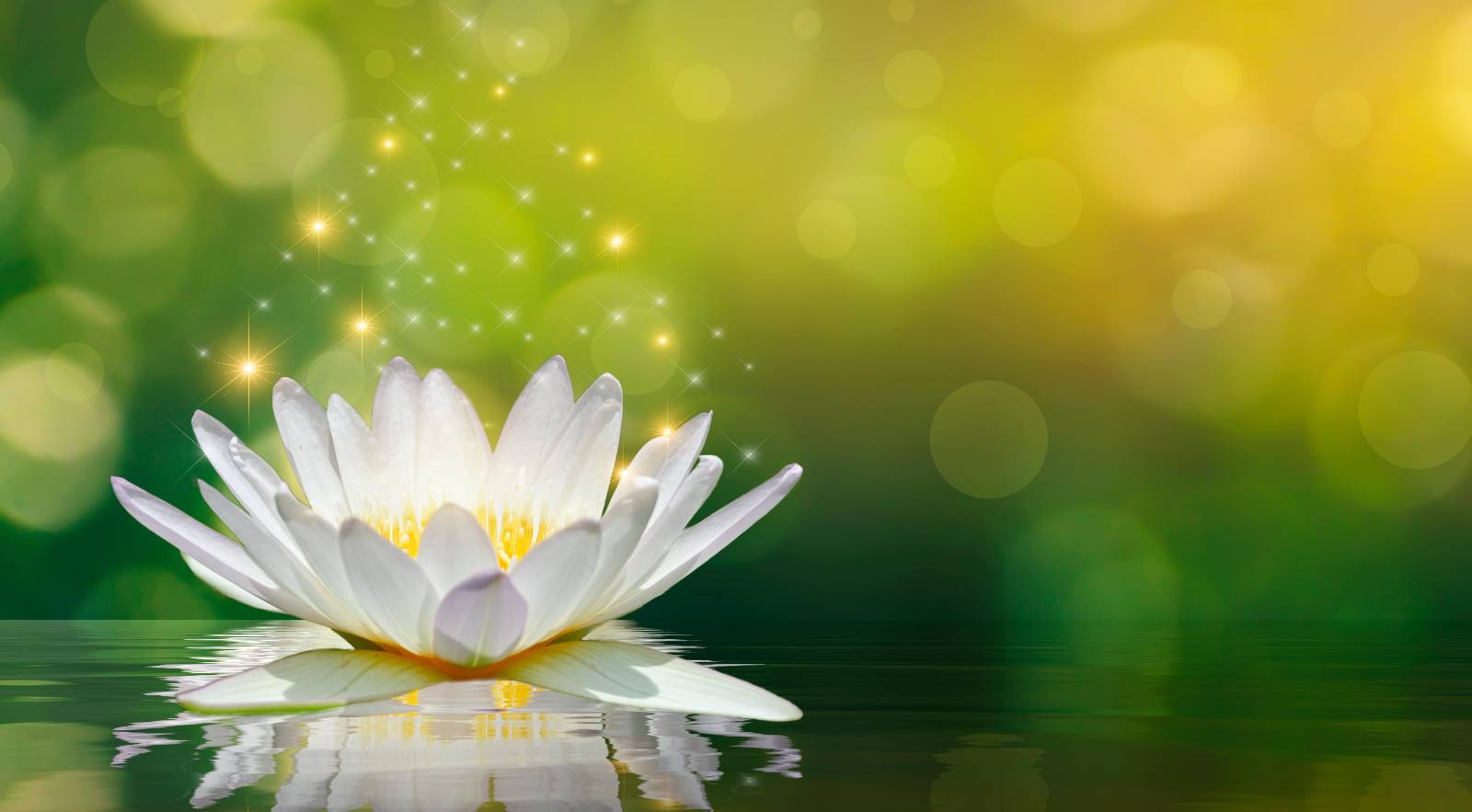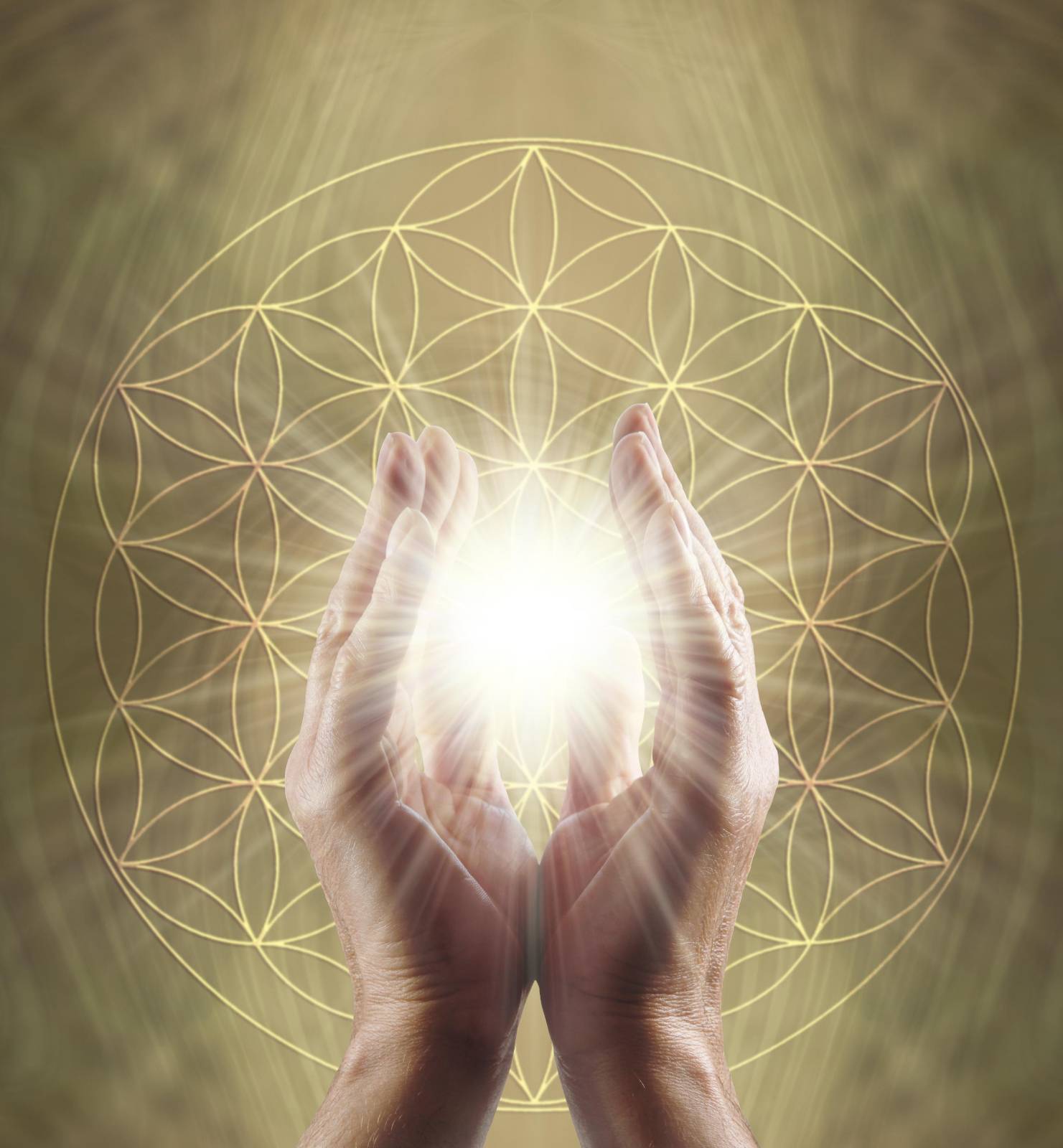
The Heart Sutra meaning lies in its revelation of the connection between Buddhism and emptiness, showing how liberation arises when we recognize the interdependence of all things.
The Heart Sutra unlocks the door to a beautiful, boundless garden. This garden represents the true nature of reality, where every flower and blade of grass reflects the profound teachings of emptiness and interconnectedness. Just as a key is small and simple, yet has the power to open vast spaces, The Heart Sutra, with its concise and profound wisdom, opens our minds to the infinite possibilities of understanding and compassion.
Within this profound and illuminating garden, one finds the sweet fragrance of liberation and the lovely blossoms of enlightenment, inviting us to explore deeper truths beyond the surface of conventional appearances.
The Heart Sutra, drenched in divine light, is a central text in Mahayana Buddhism, revered for its profound teaching on the nature of emptiness and the essence of wisdom. It is part of the Prajnaparamita (Perfection of Wisdom) literature, delivered by Avalokiteshvara, the Bodhisattva of Compassion, and recorded by the disciple Ananda.
This revelation of deeper truths was taught by the Buddha (480 BCE to 400 BCE) to bodhisattvas and other high Beings.
Siddhartha Gautama liberated himself under The Bodhi Tree to become The Buddha, an enlightened master for the ages.
What Is Mahayana Buddhism and Its Connection to the Heart Sutra Meaning?
Mahayana Buddhism is one of the major branches of Buddhism. It emphasizes the Bodhisattva path, where the goal is to achieve enlightenment (Buddhahood) for the sake of all sentient Beings, rather than personal liberation alone. It introduces the concept of Sunyata (emptiness) as central to understanding the nature of reality.
Mahayana expands the Buddhist texts beyond the original teachings of the Buddha (Four Noble Truths and the Eightfold Path), with a vast array of sutras not found in the Theravada branch of Buddhism. These include The Heart Sutra, The Diamond Sutra, and The Lotus Sutra – powerful texts that elaborate on the nature of the Bodhisattva path.
Versions Of The Heart Sutra
There are two primary versions of The Heart Sutra: a shorter version and a longer one that includes an introductory and concluding section. It was originally composed in Sanskrit. However, some argue that it could have been first written in Chinese, given its early translations and popularity in East Asia. The earliest surviving versions of the Heart Sutra are in Chinese, translated from Sanskrit by the monk Xuanzang near the Shaolin Temple in China in the 7th century CE.
After meditating on the site of Xuanzang’s translation work, my English translation below was conceived with the intent to offer poetic inspiration and helpful education amid the mysteries of the sutra’s teachings.
The Heart Sutra Translation by Shri Krishna Kalesh
In the vast, wondrous expanse of The Cosmos, where mysteries unfold in the divine dance of existence, there was a Being of immense compassion and wisdom. Her name, drenched in eternal light and love is Avalokiteshvara. To some, She is Guanyin and The Divine Mother, and to others He is Kanzeon, and still others Chenrezig.
This eternal soul emanates a pure and divine presence throughout all the realms as She lifts Consciousness and all suffering into the bosom of pure and profound emptiness.
Journeying deep into the heart of the center of reality, through the ancient practice of the Insight that Thrusts Us Into The Exponential Light Of The Farthest Star, Avalokiteshvara made a luminous discovery.
With Her eyes clear as the endless sky and boundless Universe upon Universe, She saw that the five Skandhas – those threads that weave our experience of all reality throughout spacetime – are imminently empty.
The Skandhas of Form, Feeling, Perception, Mental Formations, including emotions, and Consciousness are nothing at all. They hold nothing and embody nothing. Form is emptiness, and emptiness is form. This realization, profound and liberating, dissolved Avalokiteshvara’s chains of suffering and distress.
Hear these words, dearest Sariputra, student of The Divine, with your heart open and present, embracing the divine essence of The All That Is: This very body that we inhabit, it’s woven from the fabric of Emptiness, and Emptiness itself is what each body holds. It is as if the essence of forever was fused into our bones as a tangible gift, yet there is nothing to grasp.
Truly Sariputra, there is no separation, no distance between emptiness and the whole that holds it. And no whole lessens upon part of the whole being removed. Each is a reflection of the same truth. This truth flows through everything.
Sariputra, all of these aspects are children of the same emptiness – our Feelings, our Perceptions, our Senses, the formations of our Minds, the emanations of our hearts, and the Consciousness that observes it all.
Listen closely, beloved Sariputra, for this teaching holds the key to the great mystery: All phenomena, every fleeting form and flashing moment, each player and attribute, every belief and attitude, all experiences and projections, are marked by Emptiness. Their essence is not in birth or death, not in existence or non-existence, not in acceptance or rejection, not tainted nor pure, not growing or fading. This teaching is the heartbeat of The Universe.
In this radiant Emptiness, we find that our Bodies, Feelings, Perceptions, Mental Formations, and Consciousness are not isolated islands, but part of the seamless, irrefutable whole of wholes.
The realms of experience – the six Sense Organs as eye, ear, nose, tongue, body, and mind-heart, and their objects of focus and channels of reception, all of our related assumptions and fantasies, and the Consciousnesses that arise from myriad experiences and pursuits – are not solitary entities but interconnected threads in the grand tapestry of existence.
The Twelve Links of Interdependent Arising, the teaching that explains the cyclical nature of existence, desire, suffering, and the dance of cause and effect, and their cessation, are also woven from this same cloth. The tides of all miseries, their origins, their cessation, and the Path – these, too, are not isolated phenomena. Insight, realization, pain, no-pain – there is no separation here.
Whoever realizes this truth is freed from the chase, the endless pursuit of attainment. For the Bodhisattvas, the brave souls journeying towards enlightenment for the sake of all Beings, practicing the Insight that Thrusts Us Into The Exponential Light Of The Farthest Star, their minds are free from barriers. With no walls in their hearts, with no title, position, or assumption, they transcend identity, desire, and fear, shattering the illusions that bind, and step gracefully into the realm of Pure, Perfect Moksha, soul-liberation – The Eternal Nirvana.
The Buddhas, those luminous Beings of past, present, and future, through this very practice, have blossomed into full, resplendent Enlightenment.
Therefore, dearest Sariputra, recognize this: The Insight that Thrusts Us Into The Exponential Light Of The Farthest Star, is a profound Mantra, a beacon in the darkness, the purest, most divine and illuminating friend. It is the highest of truths, a mantra without equal. Truly, it is the brilliant light of Wisdom that dissolves all suffering for all time.
Let us together chant this sacred mantra, a hymn to merge with the vibration of The Insight that Thrusts Us Into The Exponential Light Of The Farthest Star.
We recite this to awaken to emptiness: Gate, Gate, Paragate, Parasamgate, Bodhi Svaha! (“Gone, gone, gone beyond, gone utterly beyond, Enlightenment, hail!”)
Repeat it with all your heart, dear ones, as a reminder of our journey towards the boundless shore of awakening. Again and again: Gate, Gate, Paragate, Parasamgate, Bodhi Svaha! Gate, Gate, Paragate, Parasamgate, Bodhi Svaha! Gate, Gate, Paragate, Parasamgate, Bodhi Svaha! Gate, Gate, Paragate, Parasamgate, Bodhi Svaha!
The 5 Skandhas and Their Relation to Buddhism and Emptiness
The Five Skandhas, also known as the Five Aggregates, are a fundamental concept in Buddhist philosophy that describe the constituents of a sentient being’s existence and experience. They are seen as the components that come together to form an individual’s personality, but which, upon close examination, reveal the absence of a permanent, unchanging self (anatta or anatman). The Five Skandhas are:
Form (Rupa): This refers to the physical aspect of existence, including the body and its sensory capacities. “Form” encompasses both the material body and the external objects of perception, highlighting the physical basis of experiences.
Feeling (Vedana): This aggregate represents the sensory experience of an object as either pleasant, unpleasant, or neutral. Feelings arise from the contact between the senses and their objects, forming the subjective emotional responses to sensory input.
Perception (Samjna): Perception involves recognizing and identifying objects through the senses, including the mental process of labeling and conceptualizing the world around us. It is the aspect of cognition that categorizes and interprets sensory information.
Mental Formations (Sankhara): This aggregate is a broad category that includes all types of mental habits, volitions, decisions, and conditioned responses. Mental formations encompass the various mental activities and processes that drive actions and behaviors, including will, attention, and intention.
Consciousness (Vijnana): Consciousness is the awareness of or the ability to experience the other four aggregates. It is not a persistent or unchanging awareness but rather a stream of consciousness that arises and ceases with the occurrence of sensory experiences and mental activities.
The Buddha taught that clinging to these aggregates as if they were a self or belonged to a self is the source of suffering. By understanding the impermanent and non-self nature of the Five Skandhas, individuals can cultivate detachment from them, leading to the cessation of suffering and the realization of enlightenment (nirvana). This insight into the nature of the Five Skandhas is central to the Buddhist path of liberation.
What are The Twelve Links of Interdependent Arising (Nidanas)?
The Twelve Links of Interdependent Arising, also known as the Twelve Nidanas or Pratītyasamutpāda in Sanskrit, form a foundational Buddhist teaching that explains the cyclical nature of existence and suffering.
This doctrine illustrates how the cycle of rebirth (samsara) and suffering (dukkha) is perpetuated through a series of interdependent and interconnected factors or “links.” Understanding and breaking this cycle is central to achieving liberation (nirvana) in Buddhist thought.
The Twelve Links, or Nidanas, in their traditional sequence, are:
Ignorance (Avidya): Lack of understanding or ignorance of the true nature of reality; specifically, ignorance of the Four Noble Truths.
Formations (Sankhara): Volitional actions or karmic formations driven by ignorance. These are intentional actions through body, speech, and mind that sow the seeds for future existence.
Consciousness (Vijnana): The stream of consciousness that continues from one life to the next, carrying the imprints of past actions and conditions of future existence.
Name and Form (Nama-Rupa): The combination of mental formations (name) and physical form (body) that constitutes a living being.
Six Sense Bases (Sadayatana): The six organs (eye, ear, nose, tongue, body, and mind) and their corresponding objects (sight, sound, smell, taste, touch, and mental objects) that give rise to sensory experience.
Contact (Sparsha): The interaction between the sense bases and their objects, leading to sensory experience.
Feeling (Vedana): The sensations experienced as a result of contact, classified as pleasant, unpleasant, or neutral.
Craving (Tanha): The desire or thirst for the pleasant feelings to continue and the unpleasant or neutral feelings to cease, leading to attachment.
Grasping (Upadana): The stronger attachment and clinging to objects, ideas, or desires, driven by craving.
Becoming (Bhava): The coming into being of a new existence, fueled by grasping and karmic actions.
Birth (Jati): The manifestation of a new life and the beginning of a new cycle of existence.
Aging and Death (Jara-Marana): The inevitable decay and dissolution of the physical form, leading to suffering and, without enlightenment, the continuation of the cycle.
Understanding the Twelve Links of Interdependent Arising offers a roadmap for liberation by reversing the cycle of birth, life, death, rebirth, and desires (Samsara), through the eradication of ignorance and the cessation of karmic formations, ultimately leading to the ending of suffering and the achievement of nirvana, liberation, or Moksha.
Who Is Avalokiteshvara and How the Heart Sutra Reflects His Compassion
Avalokiteshvara is a highly revered figure in Buddhism, known as the Bodhisattva of Compassion. The name “Avalokiteshvara” is Sanskrit, and it roughly translates to “The Lord Who Looks Down (in compassion)”. This Bodhisattva embodies the compassion of all Buddhas and is one of the most widely venerated Bodhisattvas across various Buddhist traditions.
In different cultures, Avalokiteshvara is known by different names and often depicted differently:
In Tibetan Buddhism: Avalokiteshvara is known as Chenrezig and is considered the patron Bodhisattva of Tibet. The Dalai Lamas are believed to be manifestations of Chenrezig. Chenrezig is often depicted with four arms, symbolizing the four immeasurable qualities of a Bodhisattva – love, compassion, joy, and equanimity.
In Chinese Buddhism: Avalokiteshvara is known as Guanyin (also spelled Kuan Yin or Quan Am in Vietnamese, Kannon in Japanese). Originally depicted as male, over time, Guanyin’s representation became increasingly feminized in East Asia. Guanyin is revered for her compassion and is often depicted as a serene, graceful woman.
In Japanese Buddhism: Known as Kannon or Kanzeon, Avalokiteshvara holds a similar position of reverence. The Thousand-Armed Kannon is a well-known depiction, symbolizing the Bodhisattva’s immense capacity to help sentient beings.
The essence of Avalokiteshvara in all these traditions is the embodiment of great compassion and mercy, the readiness to aid those in distress, and the commitment to helping all beings achieve liberation from suffering. Avalokiteshvara is believed to hear the cries of all beings and to extend a helping hand to those in need, symbolizing the universal compassion of the Buddha. The Bodhisattva is often invoked in the famous mantra, “Om Mani Padme Hum,” which is central to the devotional practices in Tibetan Buddhism.
Who is Sariputra?
Sariputra, often spelled as Śāriputra for Sanskrit pronunciation, was one of the two chief disciples of Gautama Buddha, the founder of Buddhism. He is known for his profound wisdom and is often depicted in Buddhist literature as one of the most important and wise disciples of the Buddha.
Key aspects about Sariputra include:
Wisdom: Sariputra is renowned in the Buddhist texts for his profound understanding of the Buddha’s teachings. He is often portrayed as the foremost in wisdom among the Buddha’s disciples, a master of doctrinal exposition.
Background: Before becoming a disciple of the Buddha, Sariputra was a follower of the ascetic Sanjaya Belatthiputta. His conversion to Buddhism, along with his friend Maudgalyayana (another chief disciple), is a well-known story in Buddhist traditions.
Role in the Sangha: In the Buddhist community (Sangha), Sariputra played a pivotal role in teaching and interpreting the Buddha’s teachings. His intellectual prowess and insight into the Dharma (Buddha’s teachings) were highly valued by the Buddha and the Sangha.
In Buddhist Texts: Sariputra appears in many Buddhist texts, including the Pali Canon and Mahayana sutras. He is often involved in dialogues and debates that elucidate various aspects of Buddhist teachings. In the Heart Sutra, for example, he is the one to whom the teaching of the Prajnaparamita (perfection of wisdom) is addressed.
Representation in Art and Iconography: In Buddhist art, Sariputra is often depicted as a monk with a shaved head, wearing the robes of a Buddhist monastic. He is sometimes shown in scenes from the Buddha’s life, usually sitting or standing near the Buddha and listening attentively to his teachings.
Parinirvana: Like many of the Buddha’s disciples, the passing away (Parinirvana) of Sariputra is recorded in the Buddhist texts. It is said to have occurred before the Buddha’s own Parinirvana.
Sariputra’s legacy in Buddhism is that of a wise and understanding disciple, embodying the intellectual aspects of the Buddha’s teachings and serving as an exemplar of Buddhist wisdom and practice. His figure is revered and respected in various Buddhist traditions, both Theravada and Mahayana.
What Is Prajnaparamita: Wisdom and Emptiness in Buddhism
“Prajnaparamita” is a term in Mahayana Buddhism that holds great significance. In Sanskrit, “Prajna” means “wisdom,” and “Paramita” translates to “perfection” or “transcendence.” Therefore, Prajnaparamita can be understood as the “Perfection of Wisdom” or “Transcendent Wisdom.” This concept is central to Mahayana Buddhist philosophy and practice, and it refers to a profound understanding that goes beyond ordinary knowledge and perception.
Key aspects of Prajnaparamita include:
Wisdom about the Nature of Reality: Prajnaparamita is the deep understanding of the true nature of phenomena. It is the insight into the emptiness (Shunyata) of all things, which means that all phenomena are devoid of an intrinsic, independent existence. This wisdom sees through the illusions of permanence, self, and separation, revealing the interdependent and impermanent nature of the universe.
Prajnaparamita Texts: The term also refers to a body of Mahayana sutras, known as the Prajnaparamita Sutras, which focus on the concept of emptiness and the cultivation of wisdom. These texts vary in length and complexity, ranging from the extensive “Great Prajnaparamita Sutra,” which comprises thousands of pages, to the much shorter “Heart Sutra” and the “Diamond Sutra.” These texts are revered for their profound teachings and are central to Mahayana Buddhist thought.
Role in Mahayana Buddhism: In Mahayana traditions, the perfection of wisdom is considered the highest virtue and the primary path to enlightenment. It is often said to be the wisdom that allows Bodhisattvas to attain Buddhahood for the benefit of all beings.
Symbolism and Personification: Prajnaparamita is also personified in Mahayana Buddhism as a female deity or Bodhisattva, representing the perfection of wisdom. She is depicted in Buddhist art holding a book or a lotus, symbolizing the wisdom that cuts through ignorance.
Philosophical Importance: The philosophy of Prajnaparamita has had a profound influence on various schools of Mahayana Buddhism, including Zen and Tibetan Buddhism. It challenges and refines conventional understandings of reality, urging practitioners to transcend dualistic thinking and to realize the deeper truth of emptiness.
Meditation and Practice: The practice of Prajnaparamita involves meditation and contemplation on the nature of reality, encouraging the development of deep insight and the letting go of attachment to the self and to phenomena as inherently existent.
The Prajnaparamita teachings are thus not just philosophical concepts but are intended to be directly experienced and realized through dedicated practice. They play a crucial role in guiding practitioners on the path to enlightenment in Mahayana Buddhism.
Finally: Embracing the Heart Sutra Meaning and the Path of Emptiness
The Heart Sutra meaning calls us to experience Buddhism and emptiness not as ideas, but as direct insight, understanding that all is interdependent, flowing, and ultimately free.
Embark on a journey with The Heart Sutra, a profound and timeless prayer that serves as an illuminating beacon for those seeking liberation. This treasure of pure wisdom offers a deep exploration of essential Buddhist teachings, guiding us through the interplay of emptiness, existence, and enlightenment.
Terms such as “form,” “emptiness,” “sensations,” “perceptions,” “mental formations,” and “consciousness” are not mere concepts but gateways to understanding the true nature of reality and ourselves.
“Form is emptiness, and emptiness is form,” the sutra declares, inviting us to see beyond the illusions that bind us. This insight into emptiness, far from being a void, is a revelation of interconnection and fluidity, where everything exists in relation to everything else.
As The Heart Sutra suggests, even upon extracting the whole from the whole, the whole remains the whole. This is also found in this mantra:
Om Purnnam-Adah Purnnam-Idam Purnnaat-Purnnam-Udacyate
Purnnasya Purnnam-Aadaaya Purnnam-Eva-Avashissyate
Om Shanti Shanti Shanti
Om Shri Gurubyo Namaha
Hari Om
The Heart Sutra dismantles the barriers we perceive between ourselves and the world, showing us that in emptiness, there is profound potential for compassion, wisdom, and liberation.
The six Sense organs and their objects, the Skandhas, and the realm of phenomena are explored not as obstacles but as opportunities to awaken. Each term, each concept within The Heart Sutra, is a stepping stone on the path to enlightenment, urging us to look within and recognize our innate Buddha nature.
As we navigate the teachings of The Heart Sutra, let us embrace the wisdom of emptiness, the interconnectedness of all Beings, and the boundless compassion that arises from understanding. This is not just a path of intellectual inquiry but a journey of the heart, leading us to the ultimate freedom and the joy of being in harmony with The Universe.
Let The Heart Sutra be your guide, a luminous thread through the complexities of existence, drawing you closer to the tranquility and bliss of liberation. With each step, each breath, and each moment of mindful awareness, we transcend our limitations and discover the boundless freedom that awaits.
Embrace this journey with an open heart and mind, and let the profound teachings of The Heart Sutra illuminate your path to enlightenment.
Last Updated: October 13, 2025
